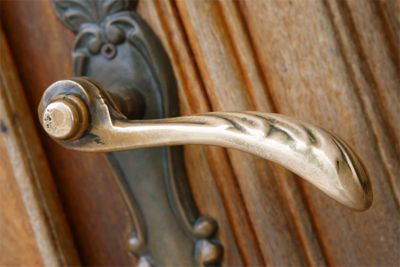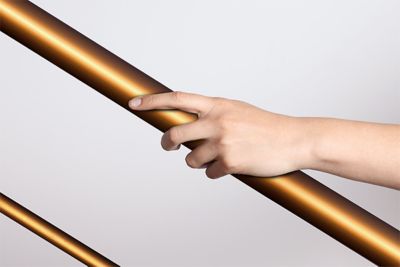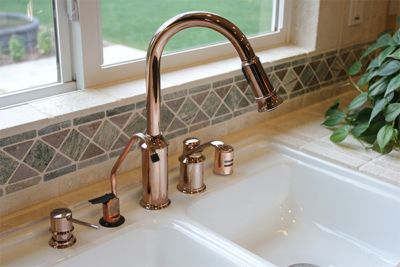-
-
学生向け無料ソフトウェアにアクセス
Ansysは次世代の技術者を支援します
学生は、世界クラスのシミュレーションソフトウェアに無料でアクセスできます。
-
今すぐAnsysに接続!
未来をデザインする
Ansysに接続して、シミュレーションが次のブレークスルーにどのように貢献できるかを確認してください。
国および地域
無料トライアル
製品およびサービス
リソースとトレーニング
当社について
Back
製品およびサービス
ANSYS BLOG
May 01, 2020
Copper Kills Germs? Yes, So Start Designing with It!
A common discussion among engineers is how COVID-19 will change the way we develop products.
The general public is becoming more savvy about how to protect themselves from the spread of germs, which is something that can benefit shoppers now and in the future.
Did you know that copper kills germs? That is why it is frequently discussed as a priority material to battle COVID-19 and future infections.
This antique door handle would have been touched often. Thankfully, it is made of copper, so it has natural antimicrobial properties.
But this is really a return to a classic application for the material. Even before humans understood what microbes were, they were using copper and its alloys, brass and bronze, to fend them off.
According to the Smithsonian, as far back as 3200 B.C. the metal was used by the Egyptians as a representation of eternal life. But that’s just the tip of the iceberg. Copper’s healing and prophylactic properties led it to be:
- Mentioned in the oldest known medical document
- Used in 1600 B.C. China to treat heart, bladder and stomach issues
- Employed as food containers and utensils to reduce the onset of diarrhea in children
- Added to battle wounds to prevent infection
As a result, many antique and ancient tools featured copper. So, the questions are:
- How does copper perform against modern pathogens?
- Can the metal be adapted to modern products?
Learn how to incorporate copper materials data into your designs, check out Ansys GRANTA Materials Data for Simulation.
Does Copper Kill Germs? You Bet It Does!
The technological leg up we have on ancient societies further proves that copper’s antiviral and antimicrobial properties are effective.
According to research highlighted by the Smithsonian, copper can battle:
- Legionella, the bacteria behind Legionnaires' disease
- Methicillin-resistant Staphylococcus aureus (MRSA), an anti-biotic resistant super bug
- Middle East Respiratory Syndrome (MERS), an illness caused by a highly lethal virus
- H1N1, the source of the Swine Flu pandemic of 2009
- Coronavirus 229E, a virus responsible for colds and pneumonia
Even better, the National Institutes of Health (NIH) reports SARS-CoV-2, the virus behind COVID-19, can only survive on copper for four hours. In comparison, it can live on plastic and steel for two to three days.
According to the Copper Development Association, brass and bronze also have antimicrobial properties. For instance, in laboratory tests and clinical trials, they can kill bacteria like MRSA.
So, what makes copper so special? It has a free electron in its outer orbital shell that promotes oxidation-reduction reactions which can:
- Prevent cell respiration
- Disrupt membranes
- Puncture viral coatings
Copper ions are also able to destroy the DNA and RNA within microbes, which means it can help prevent mutations that produce superbugs.
Additionally, all of these reactions occur when the metal is dry, wet or tarnished, so just leave it alone and let it do its thing.
According to clinical trials, copper alloy components had an 83% reduction in bacteria (compared to surfaces made from standard materials). Additionally, infection rates in patient rooms were reduced by 58% when they contained components made from copper.
How to Incorporate Copper into Product Designs
Incorporating copper, brass and bronze into product designs is emerging as a trend. For instance, hospitals are starting to incorporate it into rails, equipment and bedding.
Additionally, additive manufacturing technology to produce antimicrobial copper products is available.
So, how do engineers catch up and start incorporating copper into their products?
By incorporating copper into an often touched product, like this faucet, engineers will be able to help reduce the spread of infection.
Unfortunately, they can’t take a design made of one metal, replace the material one-to-one and expect the same performance.
Though copper, brass and bronze have been used in ancient and antique items, like utensils, weapons and door handles, pound for pound they are expensive material selections. So, engineers will need to maximize the performance of their designs while reducing the amount of material used.
This means that product development of copper designs will need to incorporate simulation, topology optimization and testing. To get the materials data needed to perform these tasks, engineers can use Ansys GRANTA Materials Data for Simulation.
Once they have the data they need, they can use it within their development cycle to produce optimal designs that can help fight future pandemics and the seasonal flu.
So, perhaps products will look more steampunk when the COVID-19 disaster ends? To embrace this aesthetic, and its life saving potential, check out Ansys GRANTA Materials Data for Simulation.



